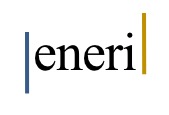Introducing and establishing a system for whistleblowing and whistleblower protection
As part of institutional procedures for handling allegations of scientific misconduct, there is a need for identifying ways in which to protect whistleblowers. Whistleblowers are individuals who alert an organization of practices and behaviors that they believe to imply scientific misconduct.
How to facilitate whistleblowing?
Whistleblowing should be viewed in light of appropriate guidelines and procedures for handling allegations of misconduct. The following questions should be considered:
- Can allegations be made orally or do they need to be in writing? What information is needed? (Would a template be helpful?)
- Can allegations be made anonymously?
- What is the location for making an allegation?
- Who are the parties or individuals who will receive information regarding the allegation?
- Will whistleblowers be excluded from any further developments in the handling of the allegations, or are whistleblower parties in the process, and therefore, can be asked for information or statements during the process?
- How are decisions of alleged cases of misconduct announced?
- What happens after a case is closed – will support be available for whistleblowers who fear retaliation?
The nature of whistleblowing (anonymous or not, written or oral) and the potential involvement of the whistleblower in the process of handling an allegation influence the act of whistleblowing and consequently should be taken into account when considering measures for the protection of whistleblowers. Whistleblower protection must always be viewed in parallel to the investigation process: Which are the points where whistleblowers are involves, and are there any points in the process at which the whistleblower may experience increased risk of retaliation?
While whistleblowers most likely generally act out of good faith, whistleblowers may sometimes act out of other motives as well. It is important that guidelines for the handling of allegations take into account this and have a clear take on how to deal with malicious whistleblowing. If malicious whistleblowing is defined as a form of scientific misconduct, this may have a deterrent effect on the use of whistleblowing as a means to harm other researchers.
Anonymous or not?
Whether or not one can make an allegation anonymously or not depends on national or institutional guidelines. In some contexts, it may be possible to make an allegation completely anonymously, but in others it may not be possible without at least some individuals having knowledge of the whistleblower’s identity. If there is not the option of anonymous whistleblowing, there is an increased need for establishing measures for whistleblower protection. The possibility of completely anonymous allegations have the downside that they may not contain sufficient information for a body or committee to even begin to investigate the matter, and since there is no information about the whistleblower, he or she cannot be contacted. Therefore, a solution in which the whistleblower can stay anonymous in the process, but whose identity is known to an authority overseeing the process, may be more sustainable in terms of actually addressing an allegation. Even so, there may be risk of the whistleblower’s identity to leak, and for those cases, there needs to be protection in place.
Whistleblower protection should be viewed in light of the guidelines and procedures for handling allegations of misconduct. Depending on, for instance, whether or not anonymous whistleblowing is possible, the whistleblower may be asked for information or statements during the process. Therefore, depending on the steps of the procedure, whistleblowers may or may not be parties in the process.
Who should be protected?
The point of departure is that whistleblowers act in good faith based on the best of their knowledge and act in the interest of the scientific community. Whistleblowers can also have other motives, which may or may not be directly related to the alleged misconduct. It is important to consider the need of protection of a whistleblower. Especially when the whistleblower is a junior member of the scientific community, there may be a greater need for protection. Junior members have a less established position, they may be working on temporary contracts the continuation of which depends on senior members of the community, and they may depend on the seniors for many other aspects as well, such as financing, data, equipment, and so on.
Retaliation can come from a variety of stakeholders, for instance alleged violators, their colleagues and collaborators or institutional superiors. Therefore, it is important that the whistleblower has someone to turn to for institutional support and knows where to find this support, what the procedure is like and what to expect during the process, and how much time it may take.
References
Decoo, W. (2001). Crisis on Campus. Confronting Academic Misconduct. Cambridge, MA.
Gunsalus, C. K. (1998). How to blow the whistle and still have a career afterwards. Science and Engineering, 4, 51-64.
Price, A. R. (1998). Anonymity and pseudonymity in whistleblowing to the U.S. Office of Research Integrity. Academic Medicine, 73(5), 467.472.
